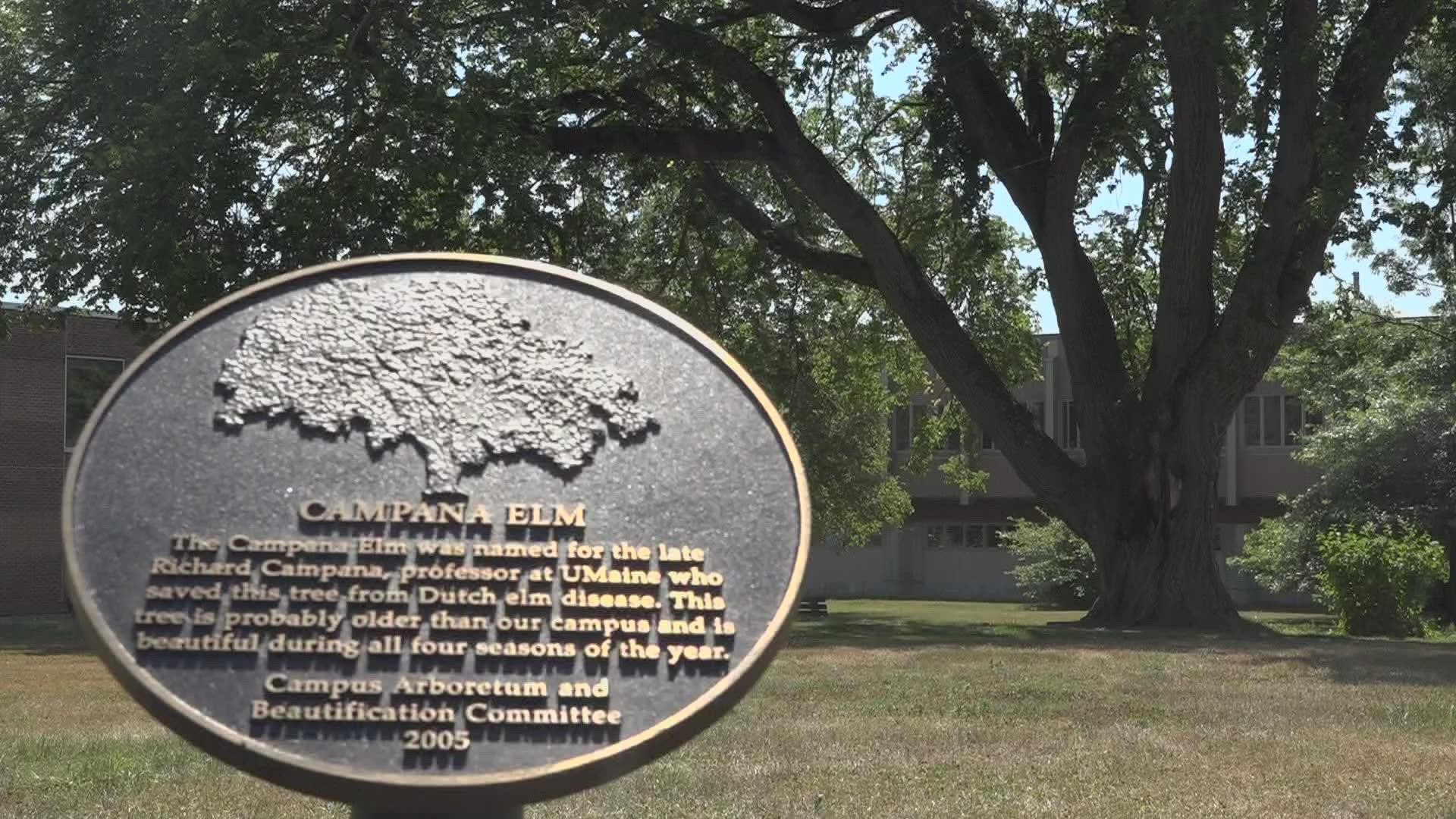ORONO, Maine — For more than 150 years, the Campana elm called the University of Maine’s Orono campus home, and the tree held an important historical significance to the institution.
“This tree is absolutely a campus landmark,” UMaine President Joan Ferinni-Mundy said. “I’ve been told people have been married under the tree. It’s a place we really have celebrated the natural landscape of this university through an incredible combination of work from our campus leaders and researchers.”
Recently, arborists determined the main trunk of the Campana elm was almost entirely rotted, which created safety concerns, according to the university. Last week, the tree had to be cut down.
This wasn’t UMaine’s last elm, but the Campana was the university’s most prominent and oldest.
In the 1930s, the deadly dutch elm disease was introduced in Ohio and eventually found its way to Maine and the Campana elm.
“Plant pathologist Richard Campana successfully treated this tree against the disease with a fungicide that he and his close colleagues developed,” UMaine professor Susan Brawley explained.
In the 1970s, Campana and his students attempted to save the infected elms on campus. In 1977, an estimated 60% of them were infected with Dutch elm disease, but Campana’s team was able to keep some of them alive with chemical injections, including the Campana elm later named after him, according to UMaine.
To ensure the tree lives on, cuttings from it have been collected to carry on its legacy.
“It was very important for us to make an attempt to propagate the tree knowing we were going to lose it,” UMaine's superintendent of horticultural facilities, Brad Libby, told NEWS CENTER Maine.
The Campana elm also inspired the creation of the Campus Natural Heritage Endowment Fund. It supports the beautification of the UMaine campus and education programs.
"I hope being reminded of this elm and all the unusual beauty of the University of Maine campus compared to many universities will help to inspire people to turn their sadness into some contributions to this endowment fund so we can build it and really take good care of this campus for a long, long time to come," Brawley said.
To donate to the Campus Natural Heritage Endowment Fund, go online or contact the University of Maine Foundation at umainefoundation@maine.edu.

